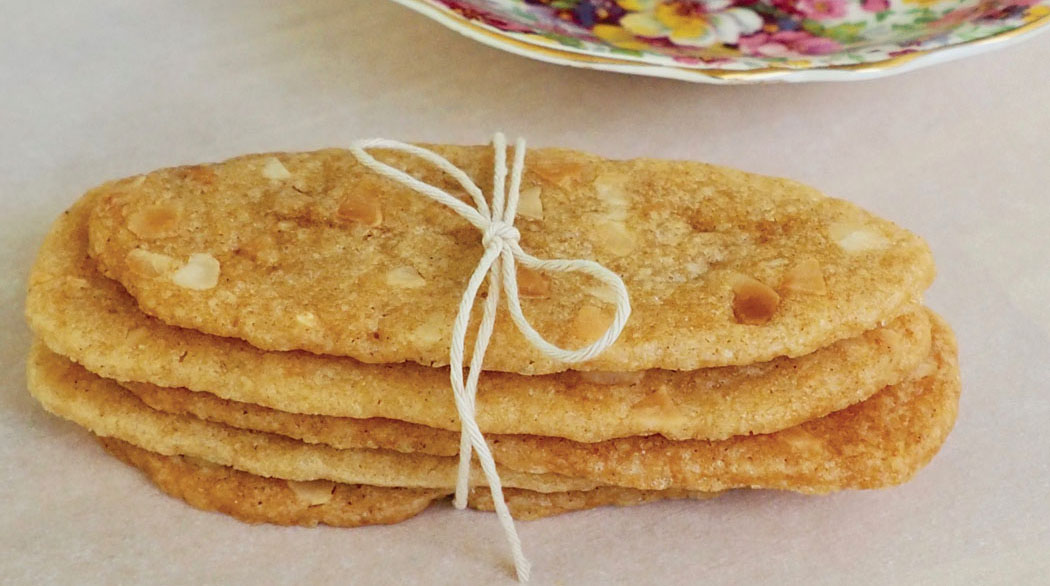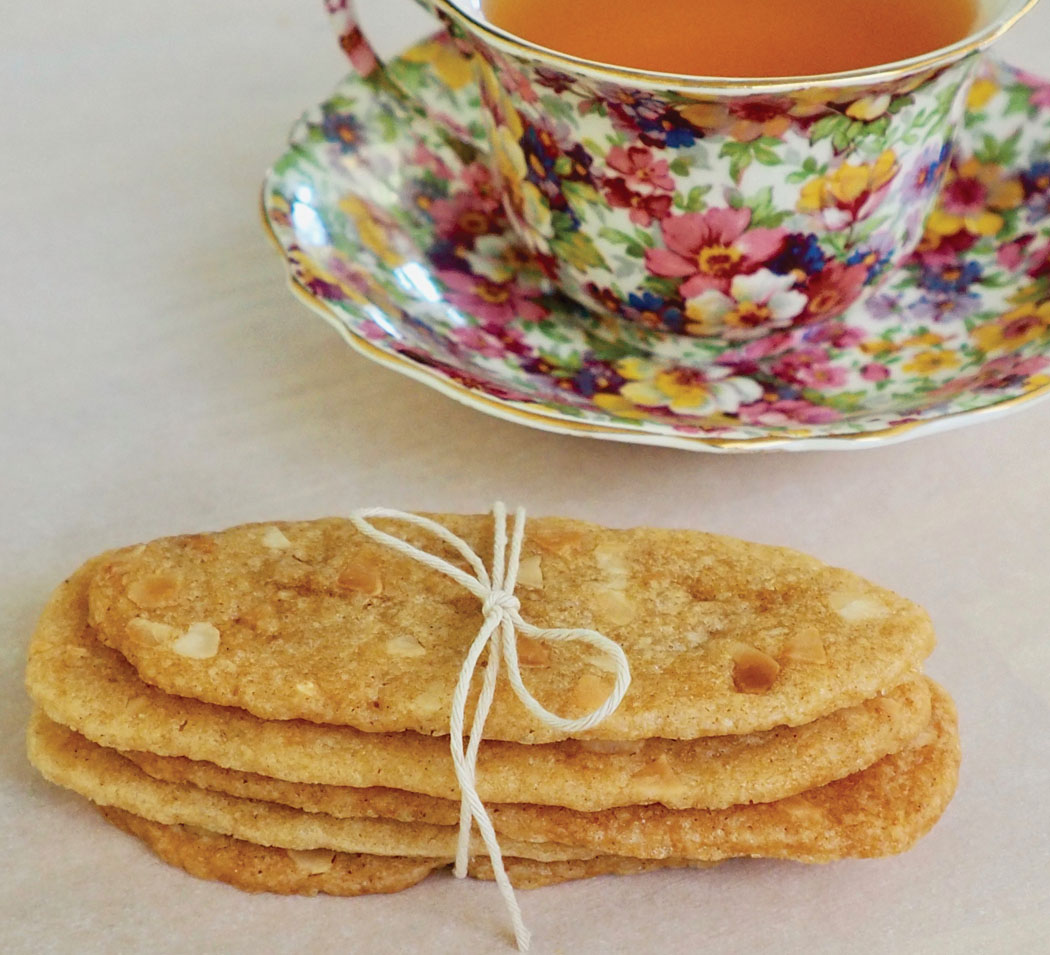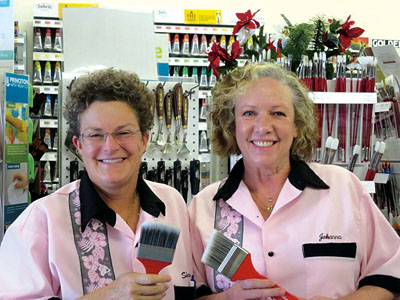
The Sweetest Mistake, with a Recipe for Pains de Macadamia
 By Brittany P. Anderson
By Brittany P. Anderson
Macadamia nut tree orchards are a common and welcoming sight on Hawai‘i Island. Many a summer afternoon I find a cool respite in the shade of their branches. Greedily, I’ve filled the pockets of my overalls with their fallen nuts, their hard outer shell like a polished wooden marble, covering the buttery nut inside. The story of how macadamia nut trees came to Hawai‘i is simple, but the man who brought them committed some of the biggest blunders in Hawai‘i Island history.

William Herbert Purvis, with his father John Purvis, came to the island of Hawai‘i from England in 1878. They invested in the Pacific Sugar Mill at Kukuihaele near Waipi‘o Valley on the Hāmākua Coast. In the early 1880s, William visited Australia, and having seen their native macadamia nut tree, he felt it would be an advantageous wind block for the sugarcane fields.
Australian aboriginal tribes enjoyed the tasty nut for thousands of years before European colonists found the plant in Queensland in the mid-1800s. Back on Hawai‘i Island, William cultivated the trees from seed and grew macadamia trees ornamentally before it blossomed into one of the most important crops for Hawai‘i.
It wasn’t until 1931 (when several other key players entered the market, including Ernst Van Tassel, who purchased the first macadamia nut processing facility in Honolulu) that the macadamia nut was even considered a crop. It was then marketed to coffee farmers as an additional income crop and windbreak. In the late 1960s, macadamia nuts took off on the mainland and became the iconic island treat we have come to adore.
William may have brought macadamia trees to Hawai‘i, but he also committed some of the most notable introductions of invasive species in Hawai‘i Island history. He imported mongoose to hunt the stowaway rats that were overtaking the island. However, rats are nocturnal and mongoose hunt during the day so the two never cross paths. Mongoose have overrun Hawai‘i Island, decimating native bird populations in the process. He also imported the quinine tree, Cinchona pubescens, from which the malaria-fighting drug is derived. Unfortunately, the quinine tree became an unruly invasive, taking over the island.
Despite William’s epic mistakes, he did bring the incredibly delicious macadamia nut to the islands. The following recipe is a macadamia nut adaptation of pains d’amande, a traditional Belgian crisp cookie made with almonds. It was extremely popular in the 1970s at the renowned Chez Panisse in Berkley, California. Most recipes explicitly require Hawaiian raw sugar, which gives it the signature crunch.
Addictingly crispy, and bursting with macadamia nuts, these pains de macadamia stand up to multiple dunks in tea or coffee. They can even be crumbled to make a brilliant cheesecake crust.
Pains de Macadamia
 2 1/2 cups all purpose flour
2 1/2 cups all purpose flour
1/4 tsp baking soda
4 oz (weighed) unsalted butter
1/3 cup water
1/2 tsp ground cinnamon
Pinch of salt
1 1/3 cup Hawaiian raw sugar
1 cup chopped macadamia nuts
In a bowl, whisk flour and baking soda; set aside. In a medium pot, combine butter, water, cinnamon, salt and heat over medium until the butter is melted. Do not boil. Add sugar and stir until most of the sugar is melted. Remove from heat and stir in macadamia nuts and flour mixture until well combined into dough. Line a loaf pan with plastic wrap and pour in the dough. Place in refrigerator to chill for 4–6 hours.
Preheat oven to 325°F and place oven racks on lower third of the oven. Line cookie sheets with parchment paper. Remove chilled dough from loaf pan and cut slices as thinly as possible (1/8 inch or thinner) using a serrated or very sharp knife. Carefully arrange on the lined cookie sheet allowing at least 1/2 inch between cookies. Bake for 8–10 minutes then carefully flip the cookies to bake for 4–6 minutes on the other side. Cookies should be honey colored when removed from the oven. Place on a wire rack to cool. Batches should always be started on a cooled cookie sheet. Recipe can make approximately 100 cookies. Enjoy with your favorite tea under the shade of a tree. ❖


